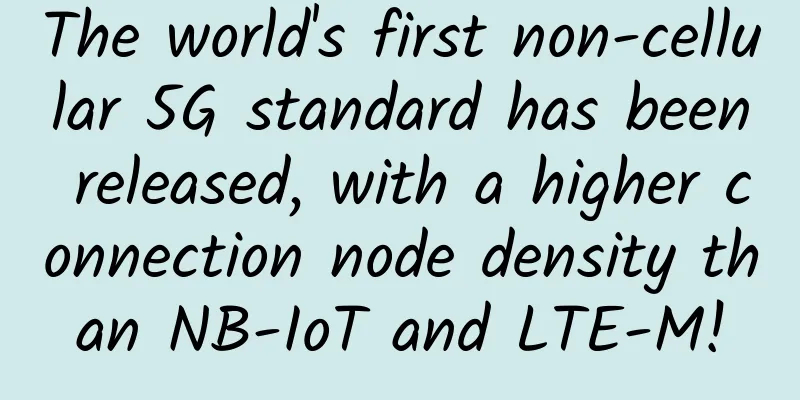Super detailed explanation of Socket communication principles and examples

|
We are well aware of the value of information exchange, but how do processes in the network communicate with each other? For example, when we open a browser to browse the web every day, how does the browser process communicate with the web server? When you chat with QQ, how does the QQ process communicate with the server or the QQ process where your friends are? All of these rely on sockets. So what is a socket? What are the types of sockets? And the basic functions of sockets, all of which are what this article wants to introduce. The main contents of this article are as follows:
1. How do processes communicate in a network? There are many ways of local inter-process communication (IPC), but they can be summarized into the following four categories:
But these are not the subject of this article! What we want to discuss is how do processes communicate in the network? The first problem to be solved is how to uniquely identify a process, otherwise there is no communication! Locally, a process can be uniquely identified by the process PID, but this does not work in the network. In fact, the TCP/IP protocol family has helped us solve this problem. The "ip address" of the network layer can uniquely identify the host in the network, and the "protocol + port" of the transport layer can uniquely identify the application (process) in the host. In this way, the process of the network can be identified by the triple (ip address, protocol, port), and the process communication in the network can use this mark to interact with other processes. Applications using TCP/IP protocols usually use application programming interfaces: UNIX BSD sockets and UNIX System V TLI (which has been eliminated) to achieve communication between network processes. At present, almost all applications use sockets, and now is the Internet age, and process communication in the network is everywhere, which is why I say "everything is a socket". 2. What is a Socket? We already know that processes in the network communicate through sockets, so what is a socket? Sockets originated from Unix, and one of the basic philosophies of Unix/Linux is "everything is a file", which can be operated using the "open -> read/write -> close" mode. My understanding is that Socket is an implementation of this mode, and socket is a special file. Some socket functions are operations on it (read/write IO, open, close), which we will introduce later. The origin of the word socket:
3. Basic operations of socket Since socket is an implementation of the "open-write/read-close" model, socket provides function interfaces corresponding to these operations. The following takes TCP as an example to introduce several basic socket interface functions. (1) socket() function
The socket function corresponds to the opening operation of a common file. The opening operation of a common file returns a file descriptor, while socket() is used to create a socket descriptor, which uniquely identifies a socket. This socket descriptor is the same as the file descriptor. It is used in subsequent operations and is used as a parameter to perform some read and write operations. Just as you can pass different parameter values to fopen to open different files, you can also specify different parameters to create different socket descriptors when creating a socket. The three parameters of the socket function are:
Note: Not all types and protocols can be combined at will, for example, SOCK_STREAM cannot be combined with IPPROTO_UDP. When protocol is 0, the default protocol corresponding to type will be automatically selected. When we call socket to create a socket, the returned socket descriptor exists in the protocol family (address family, AF_XXX) space, but does not have a specific address. If you want to assign an address to it, you must call the bind() function, otherwise the system will automatically assign a random port when calling connect() or listen(). (2) bind() function As mentioned above, the bind() function assigns a specific address in an address family to the socket. For example, for AF_INET and AF_INET6, it assigns a combination of an IPv4 or IPv6 address and a port number to the socket.
The three parameters of the function are:
The corresponding IPv6 is:
The Unix domain corresponds to:
Usually, when a server starts, it will bind a well-known address (such as IP address + port number) to provide services, and clients can use it to connect to the server; the client does not need to specify it, and the system automatically assigns a port number and its own IP address combination. This is why the server usually calls bind() before listening, but the client does not call it, but the system randomly generates one when connecting(). Network byte order and host byte order: Host byte order is what we usually call big-endian and little-endian mode: different CPUs have different byte order types. These byte orders refer to the order in which integers are stored in memory. This is called host order. The definitions of Big-Endian and Little-Endian in the reference standard are as follows:
Network byte order: 32-bit values of 4 bytes are transmitted in the following order: first 0 to 7 bits, then 8 to 15 bits, then 16 to 23 bits, and finally 24 to 31 bits. This transmission order is called big-endian byte order. Since all binary integers in the TCP/IP header are required to be transmitted in this order on the network, it is also called network byte order. Byte order, as the name implies, is the order of bytes, which is the order in which data larger than one byte is stored in memory. There is no order problem for one-byte data. Therefore: when binding an address to a socket, please convert the host byte order to the network byte order first, and do not assume that the host byte order is the same as the network byte order, which is Big-Endian. This problem has caused a bloody incident! Due to this problem in the company's project code, many inexplicable problems have occurred, so please remember not to make any assumptions about the host byte order, and be sure to convert it to the network byte order before assigning it to the socket. (3) listen(), connect() functions If it is used as a server, after calling socket() and bind(), it will call listen() to listen to the socket. If the client calls connect() to send a connection request at this time, the server will receive the request.
The first parameter of the listen function is the socket descriptor to be listened, and the second parameter is the maximum number of connections that the corresponding socket can queue. The socket created by the socket() function is an active type by default, and the listen function changes the socket to a passive type, waiting for the client's connection request. The first parameter of the connect function is the client's socket description word, the second parameter is the server's socket address, and the third parameter is the length of the socket address. The client establishes a connection with the TCP server by calling the connect function. (4) accept() function After the TCP server calls socket(), bind(), and listen() in sequence, it will listen to the specified socket address. After the TCP client calls socket() and connect() in sequence, it sends a connection request to the TCP server. After the TCP server listens to this request, it will call the accept() function to receive the request, and the connection is established. After that, you can start network I/O operations, which are similar to the read and write I/O operations of ordinary files.
The first parameter of the accept function is the server's socket descriptor, the second parameter is a pointer to struct sockaddr *, which is used to return the client's protocol address, and the third parameter is the length of the protocol address. If accpet succeeds, the return value is a new descriptor automatically generated by the kernel, representing the TCP connection to the returning client. Note: The first parameter of accept is the server's socket descriptor, which is generated when the server starts calling the socket() function, called the listening socket descriptor; and the accept function returns the connected socket descriptor. A server usually only creates one listening socket descriptor, which exists throughout the life cycle of the server. The kernel creates a connected socket descriptor for each client connection accepted by the server process. When the server completes the service for a client, the corresponding connected socket descriptor is closed. (5) read(), write() and other functions Everything is ready, and the connection between the server and the client has been established. You can call network I/O to perform read and write operations, which means that communication between different processes in the network is realized! There are several groups of network I/O operations:
I recommend using the recvmsg()/sendmsg() functions, which are the most common I/O functions. In fact, you can replace all the other functions above with these two functions. Their declarations are as follows:
The read function is responsible for reading the contents from fd. When the read is successful, read returns the number of bytes actually read. If the returned value is 0, it means that the end of the file has been read. If it is less than 0, it means an error has occurred. If the error is EINTR, it means that the read is caused by an interrupt. If it is ECONNREST, it means that there is a problem with the network connection. The write function writes the nbytes bytes in buf to the file descriptor fd. If successful, it returns the number of bytes written. If failed, it returns -1 and sets the errno variable. In a network program, there are two possibilities when we write to a socket file descriptor. 1) The return value of write is greater than 0, indicating that part or all of the data has been written. 2) The return value is less than 0, which means an error has occurred. We need to handle it according to the error type. If the error is EINTR, it means an interrupt error occurred during writing. If it is EPIPE, it means there is a problem with the network connection (the other party has closed the connection). I will not introduce these I/O function pairs one by one. For details, please refer to the man document or Baidu or Google. The following example will use send/recv. (6) close() function After the server and the client establish a connection, some read and write operations will be performed. After the read and write operations are completed, the corresponding socket descriptor must be closed, just like calling fclose to close the open file after operating the open file.
The default behavior of close a TCP socket is to mark the socket as closed and then immediately return to the calling process. The descriptor can no longer be used by the calling process, that is, it can no longer be used as the first parameter of read or write. Note: The close operation only reduces the reference count of the corresponding socket descriptor by 1. Only when the reference count reaches 0 will the TCP client be triggered to send a connection termination request to the server. 4. Detailed explanation of TCP three-way handshake to establish connection in socket We know that TCP needs to perform a "three-way handshake" to establish a connection, that is, to exchange three packets. The general process is as follows:
Only the three-way handshake is completed, but in which functions of the socket does this three-way handshake occur? Please see the following figure: Figure 1. TCP three-way handshake sent in the socket As can be seen from the figure, when the client calls connect, the connection request is triggered and a SYN J packet is sent to the server. At this time, connect enters a blocked state; the server monitors the connection request, that is, receives the SYN J packet, calls the accept function to receive the request and sends SYN K and ACK J+1 to the client. At this time, accept enters a blocked state; after the client receives SYN K and ACK J+1 from the server, connect returns and confirms SYN K; when the server receives ACK K+1, accept returns, and the three-way handshake is completed and the connection is established. Summary: The client's connect is returned in the second of the three-way handshake, and the server's accept is returned in the third of the three-way handshake. 5. Detailed explanation of TCP's four-way handshake to release the connection in socket The above introduces the process of establishing a TCP three-way handshake in a socket and the socket functions involved. Now let's introduce the process of releasing a connection in a socket using a four-way handshake. Please see the figure below: Figure 2. TCP four-way handshake sent in the socket The process is shown in the figure below:
This way there is a FIN and ACK in each direction. 6. Here is an example of implementation First, let's take a screenshot of the implementation. The server-side code is as follows:
Client code:
Encapsulated InitSock.h:
|
<<: A must-have for 5G engineers! A complete list of 5G protocols
>>: Let’s talk about 5G this year
Recommend
If you unplug the SIM card, turn off the phone, and use a non-smartphone, the itinerary code will not know your whereabouts?
No matter you unplug the SIM card or turn off the...
How to network clock synchronization in wireless networks?
[[346597]] This article is reprinted from the WeC...
With intelligent networking and remote working, Dandelion allows you to spend the New Year without having to work overtime!
Grabbed a ticket to go home for the Spring Festiv...
How does Baidu Netdisk steal your traffic?
Recently, Baidu has once again been at the center...
Why Wi-Fi will not disappear but become more important in the 5G era?
This article is reproduced from Leiphone.com. If ...
What Every Developer Should Know About TCP
Why do you need to place servers geographically c...
Why does TCP use the "three-way handshake" to establish a connection? An example will teach you
First of all, why is it a three-way handshake? Af...
Evoxt's new Japanese VPS starts at $2.99 per month, 512MB/5GB/250GB@1Gbps/Softbank line
I shared Evoxt once in June this year. It is a fo...
Can mandatory pre-installation solve the problem? Controversial 5G news: Even if we are not competitive, we cannot act rogue
In the public opinion field, operators are critic...
Brocade Expands Data Center Networking Solutions to Accelerate Digital Transformation
Brocade today announced the expansion of the Broc...
EBS Lens, a powerful tool for block storage monitoring and service stress testing and tuning, is released
EBS Monitoring Status Block storage is a block de...
5G is coming. China Mobile will incubate various vertical applications to realize the Internet of Everything
4G changes life, 5G changes society. At the 2016 ...
Compared with the insecure HTTP, how does HTTPS ensure network communication security?
HTTP is an excellent communication protocol, but ...
How will 5G mainstreaming affect the Internet of Things in 2023?
The number of Internet of Things (IoT) endpoints ...
Research on scenario-based interoperability strategy based on 5G perception inflection point
Author: Han Binjie and Lu Dan, unit: Hebei Mobile...



![[Black Friday] spinservers: $49/month - E3-1280v5, 32G memory, 1TB NVme, 10Gbps bandwidth, San Jose/Dallas data center](/upload/images/67cabcf402984.webp)





